Ditapis dengan

Fundamentals of Radiation Oncology Physical, Biological, and Clinical Aspects…
Buku Fundamentals of Radiation Oncology edisi keempat ini memberikan panduan yang komprehensif dan terstruktur untuk memahami dasar-dasar fisika, biologi, dan klinis dari onkologi radiasi. Dibagi menjadi empat bagian utama, buku ini membahas dasar-dasar sains radiasi, teknologi pengobatan terkini, pendekatan untuk kanker spesifik lokasi, serta penanganan radioterapi darurat dan paliatif. Pembar…
- Edisi
- 4
- ISBN/ISSN
- 978-0-443-22208-5
- Deskripsi Fisik
- xxiii,541p.:illus.;pdf
- Judul Seri
- -
- No. Panggil
- 616.99406 MUR F
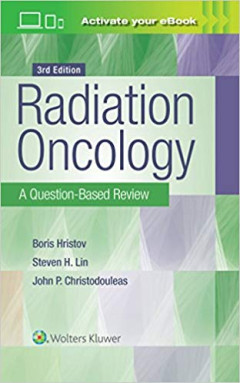
Radiation Oncology (3rd Edition): A Question-Based Review
This book comes with the concept of questions and answers related to radiation oncology. The subject matter is divided into 16 chapters covering pediatrics, central nervous system, eye, head and neck, thorax, breast, gastrointestinal, genitourinary, gynecology, hematology, bone, soft tissue, skin, palliative, benign disease, and primary immunotherapy. This book is published by wolters kluwer pu…
- Edisi
- -
- ISBN/ISSN
- 9781496360366
- Deskripsi Fisik
- xxxi, 648p.:illus,20cm
- Judul Seri
- -
- No. Panggil
- 616.9940642 HRI R

Global Oncology Harvard Global Health Catalyst summit lecture notes
The Harvard Global Health Catalyst summit is a premier yearly event bringing together leaders from across the world to share knowledge, discuss, and partner in developing innovative solutions to vexing health problems and advocating for progress towards improved health outcomes that save lives. The current main focus is on cancer, notably the emerging field of global radiation oncology, cancer …
- Edisi
- -
- ISBN/ISSN
- 978-0-7503-1359-9
- Deskripsi Fisik
- 66p. : illus. ; 24 cm
- Judul Seri
- -
- No. Panggil
- 616.9940757 NGW G
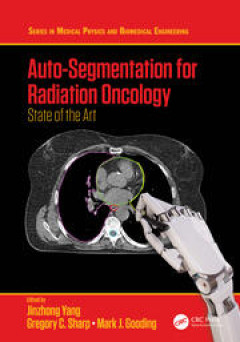
Auto-Segmentation for Radiation Oncology State Of the Art
This book provides a comprehensive introduction to current state-of-the-art auto-segmentation approaches used in radiation oncology for auto-delineation of organs-of-risk for thoracic radiation treatment planning. Containing the latest, cutting edge technologies and treatments, it explores deep-learning methods, multi-atlas-based methods, and model-based methods that are currently being develop…
- Edisi
- -
- ISBN/ISSN
- 978-0-429-32378-2
- Deskripsi Fisik
- 253p. : illus. ; 24 cm
- Judul Seri
- -
- No. Panggil
- 616.994 YAN A
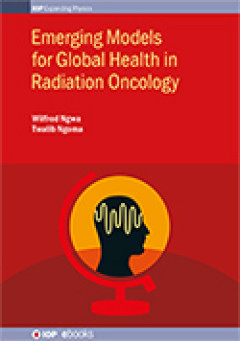
Emerging Models for Global Health in Radiation Oncology
In response to the growing global health challenge in the fight against cancer, there is now a greater need for radiation oncology health professionals across institutions to collaborate and be more globally engaged. Emerging Models for Global Health in Radiation Oncology is a response to the need for a book that comprehensively covers the important and emerging field of radiation oncology. Thi…
- Edisi
- -
- ISBN/ISSN
- 978-0-7503-1224-0
- Deskripsi Fisik
- 49p. : illus. ; 24 cm
- Judul Seri
- -
- No. Panggil
- 616.994 NGW E
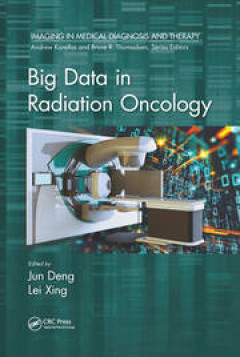
Big Data in Radiation Oncology
Big Data in Radiation Oncology gives readers an in-depth look into how big data is having an impact on the clinical care of cancer patients. While basic principles and key analytical and processing techniques are introduced in the early chapters, the rest of the book turns to clinical applications, in particular for cancer registries, informatics, radiomics, radiogenomics, patient safety and qu…
- Edisi
- -
- ISBN/ISSN
- 978-1-138-63343-8
- Deskripsi Fisik
- 282 p. : illus. ; 24 cm
- Judul Seri
- -
- No. Panggil
- 616.994 DEN B
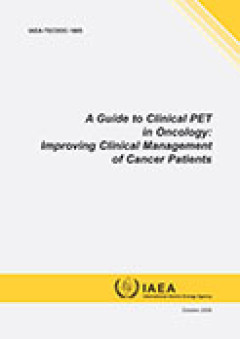
A Guide to Clinical PET in Oncology: Improving Clinical Management of Cancer …
This publication is intended to assist health managers, nuclear medicine physicians and referring physicians involved in the management of cancer patients through further application of positron emission tomography (PET) technology. PET is currently used in conjunction with computed tomography (PET/CT), 18F-fluorodeoxyglucose (18F-FDG) and other radiopharmaceuticals to detect and target cancer …
- Edisi
- 1605
- ISBN/ISSN
- 978–92–0–110608–7 / 1011–4289
- Deskripsi Fisik
- 60 p.;730kb
- Judul Seri
- -
- No. Panggil
- 616.994075 IAE A

Proton Therapy Physics
Proton Therapy Physics goes beyond current books on proton therapy to provide an in-depth overview of the physics aspects of this radiation therapy modality, eliminating the need to dig through information scattered in the medical physics literature. After tracing the history of proton therapy, the book summarizes the atomic and nuclear physics background necessary for understanding proton i…
- Edisi
- -
- ISBN/ISSN
- 9781439836446
- Deskripsi Fisik
- xx, 684 p. : illus. ; 23 cm
- Judul Seri
- -
- No. Panggil
- 615.842 PAG p
 Karya Umum
Karya Umum  Filsafat
Filsafat  Agama
Agama  Ilmu-ilmu Sosial
Ilmu-ilmu Sosial  Bahasa
Bahasa  Ilmu-ilmu Murni
Ilmu-ilmu Murni  Ilmu-ilmu Terapan
Ilmu-ilmu Terapan  Kesenian, Hiburan, dan Olahraga
Kesenian, Hiburan, dan Olahraga  Kesusastraan
Kesusastraan  Geografi dan Sejarah
Geografi dan Sejarah